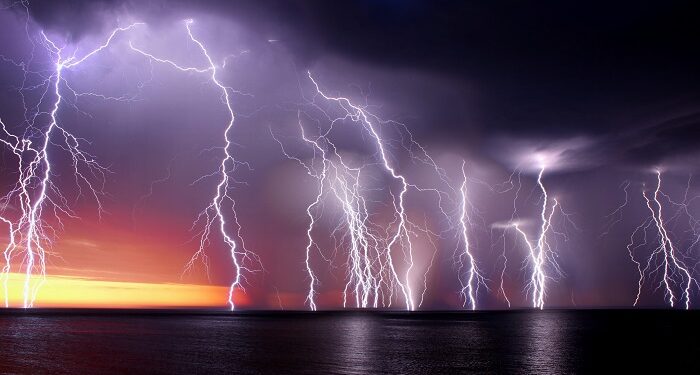Nature sometimes brings surprises. The various meteorological phenomena are especially striking.
Weather anomalies are rare and extraordinary meteorological events that defy typical weather patterns and can capture the imagination of scientists and enthusiasts alike. These unusual phenomena often occur under unique conditions and can have significant impacts on the environment and human activities. In this article, we will explore some of the most fascinating and unusual weather anomalies from around the globe.
1. Ball Lightning
Ball lightning is a rare and mysterious phenomenon where glowing, spherical objects appear during thunderstorms. These floating orbs can vary in size and color and are often reported to move erratically before disappearing. Despite numerous accounts and theories, the exact cause of ball lightning remains unclear and is a subject of ongoing scientific investigation.
2. Catatumbo Lightning
The Catatumbo lightning is a unique meteorological phenomenon that occurs over the Catatumbo River in Venezuela. This region experiences intense lightning storms nearly every night of the year, with an average of 260 lightning strikes per hour. The high frequency of lightning is attributed to the region’s topography and atmospheric conditions, which create a perfect environment for this spectacular display.
3. Red Rain
Red rain is a rare phenomenon where rain appears red or pink due to the presence of colored particles in the atmosphere. This unusual occurrence was notably reported in Kerala, India, in 2001. The red color was initially attributed to airborne spores from a local algae bloom, though other explanations have included dust or pollutants. The event remains a topic of scientific interest.
4. Sailing Stones
Sailing stones, or moving rocks, are found in California’s Death Valley and are known for their slow but visible movement across the desert floor. These large rocks leave trails behind them, and their movement was previously thought to be caused by mysterious forces. Recent studies have shown that the stones move due to a combination of thin ice sheets and light winds that push the stones across the surface.
5. Frost Flowers
Frost flowers are delicate ice formations that occur on plant stems and other surfaces when the temperature drops rapidly. These intricate structures form when moisture in the air condenses and freezes, creating beautiful and fragile patterns. Frost flowers are often seen in polar regions and are a striking example of nature’s ability to create art from the cold.
6. Green Flash
The green flash is a rare optical phenomenon that occurs just before sunrise or just after sunset. For a brief moment, the sun can appear to flash green due to the refraction of sunlight through the Earth’s atmosphere. This effect is best observed from locations with a clear horizon and can be a captivating and fleeting sight for those lucky enough to witness it.
7. Fire Rainbow
Fire rainbows, or circumhorizontal arcs, are colorful optical phenomena that resemble rainbows but are formed differently. They occur when sunlight passes through ice crystals in high-altitude cirrus clouds at specific angles. The result is a vivid spectrum of colors arranged horizontally in the sky. Fire rainbows are rare and require precise atmospheric conditions to form.






















